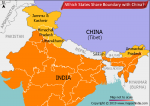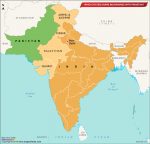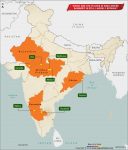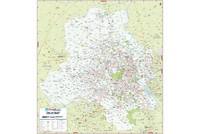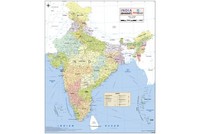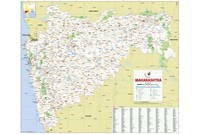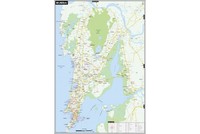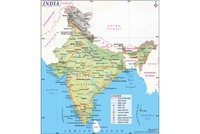Lalu Prasad Yadav, the two-time chief minister of Bihar who dominated the state’s politics for nearly 15 years, was born on 11 June 1948 in Phulwaria village of Bihar’s Gopalganj district to Kundan Rai and Marachhiya Devi.
One among six brothers, he would as a child accompany his mother to sell milk in the locality. Later he moved to Patna and secured degrees in law and political science from the city’s BN College. He worked as a clerk in a veterinary college.
Like many politicians of his generation, Lalu Yadav first dabbled in student politics. By 1973 he had become president of the student union at Patna University. The following year he joined Jai Prakash Narayan’s anti-establishment campaign, which originated in Bihar but aimed to transform India’s increasingly corrupt political system.
Lalu’s ability to handle a crowd and public-speaking skills were noticed, and he became the Janata party candidate from Chapra in the historic post-emergency 1977 Lok Sabha polls. Indira Gandhi’s Congress lost, and Lalu at the age of 29 became an MP.
When the Janata experiment collapsed and Congress returned to power in 1980, Lalu could not retain his Lok Sabha seat. But he managed to become an MLA in the Bihar assembly in the same year.
This was also the time when other young leaders from Bihar such as Nitish Kumar and Ravi Shankar Prasad were making their mark in state politics, but Lalu seemed to have a head start over them because of his political street-smartness and the fact that he belonged to the dominant Yadav community. Getting the caste arithmetic right, Lalu realised early on, would be the key to his political ambitions.
Rise to power
In the Bihar assembly, through most of the 1980s, Lalu was seen to be close to Karpuri Thakur, the former chief minister. Thakur’s death in 1988 came at a crucial time in both Bihar’s and India’s politics — the mandal and mandir agitations would soon be unleashed and change the country forever. The forces of caste and student politics made Lalu the natural choice as leader of opposition in the Bihar assembly.
In 1989, he became a Lok Sabha MP as prime minister V.P. Singh formed a non-Congress government in Delhi.
Bihar’s Yadav vote was firmly behind Lalu and the state’s Muslims too, wary of the BJP’s expanding base, started backing him as he began to position himself as a champion of the minorities. When the Janata party won the 1990 assembly elections in Bihar, Lalu after some deft maneuvering became chief minister. Later that year he famously stopped L.K. Advani’s rath yatra in Bihar and got the BJP leader arrested.
As chief minister Lalu’s image was that of a colourful personality with a rustic, native wit. But behind the image was a calculating political brain. Explaining the Lalu phenomenon the novelist and critic Chandrahas Choudhury wrote in October 2013 in Mint: “With his deliberate country-bumpkin air, his salty oratory, and his willingness to play both king and court jester, Yadav is a cartoonist’s dream, a sound-bite factory for journalists, and a perpetual provocation to political scientists and moralists. The star of what is sometimes pejoratively called India’s cow-belt — the large, predominantly rural, densely populated swathe that spans the great northern plains — Yadav personally owns more than 100 bovines.”
Consolidation and decline
Lalu’s troubles started in 1996 with the so-called "fodder scam" in which he and other bigwigs from the state were accused. Though he resigned as chief minster, he installed his wife, Rabri Devi, as his successor. It was an open secret that the real power remained in the hands of Lalu.
In July 1997 he formed a new political party, the Rashtriya Janata Dal (RJD). Later in the same month, after being denied bail by the Supreme Court in the fodder scam, Lalu surrendered before a CBI court. He was released on bail after spending 135 days in judicial custody.
He continued to be a force to reckon with in state and national politics.
Though he lost in the 1999 Lok Sabha polls, he became an MLA in the Bihar assembly the following year, with the RJD coming to power and Rabri Devi retaining the chief minister’s post.
In a profile of Lalu in Outlook magazine in 2003, the journalist Saba Naqvi wrote: “Determined to keep his Yadav-Muslim base intact, Laloo has fought hard against any effort to ‘spread fascism’ in Bihar. His recent handling of the VHP’s Praveen Togadia and Giriraj Kishore, who were sent packing from Patna airport, was a continuation of his policy of ‘taking no rubbish from the deshdrohis’. The result has been impressive: not a single communal riot in Bihar, one of the most communally sensitive parts of the country, since Laloo took over.”
However, law and order in general was a noticeable area of concern in Bihar during the Lalu years, many observers believed. Also, the state’s social indicators remained poor.
Lalu was elected to the Rajya Sabha in 2002 and to the Lok Sabha in the 2004 general elections. The RJD’s 21 Lok Sabha seats in 2004 made him an important national player in the Congress-led UPA alliance.
The RJD maintained its domination of Bihar politics till the 2005 state elections when a coalition of the BJP and Janata Dal (United) under the leadership of Nitish Kumar came to power in the state. The Nitish-led alliance won the next assembly elections in 2010 by a handsome margin as well.
As an ally of the Congress Lalu was, however, the union railway minister from 2004-2009.
In a big blow to Lalu and his party, he and 44 others were convicted in the fodder scam in September 2013. Lalu got a five-year jail term, was disqualified as MP and became ineligible to contest polls for another six years.
Though the RJD was clearly on the backfoot because of Lalu’s sentence and the party’s poor performance in the 2014 Lok Sabha elections, political pundits would hesitate to write the political obituary of Lalu Prasad Yadav in a hurry.
Also on this day:
1897 — Ram Prasad Bismil, Indian revolutionary, was born
1937 — Ganesh Pyne, renowned Indian artist, was born
2013 — V.C. Shukla, Congress politician and union minister, died

